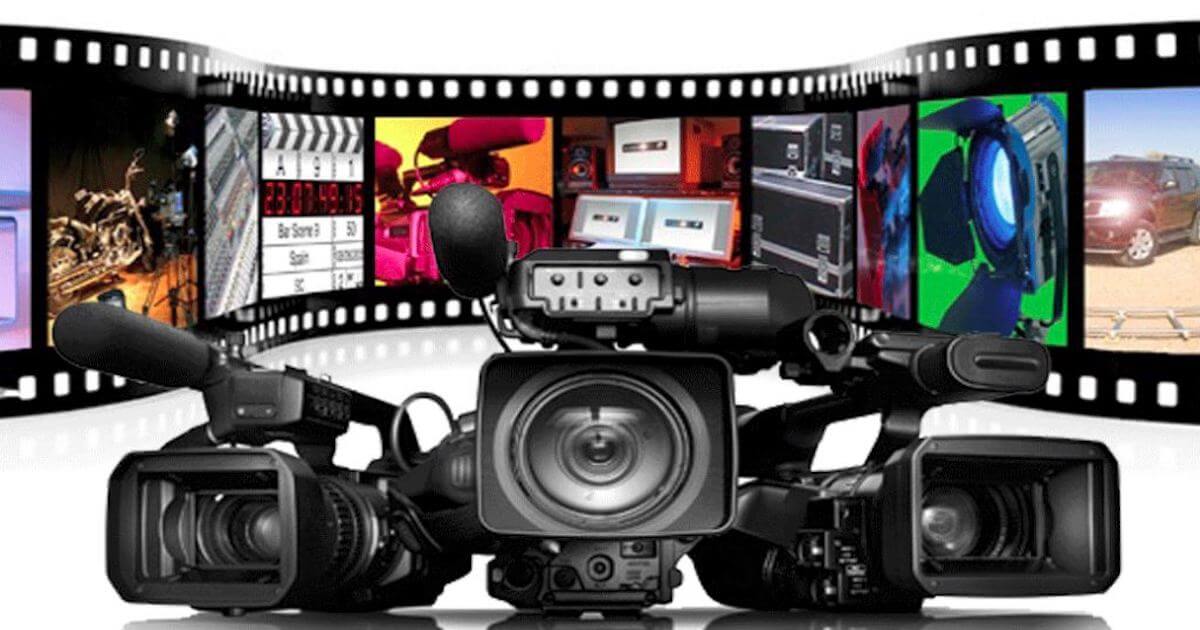Staff Writer Eli Kell-Abrams sheds light on the world of video production.
"Oh the times, they are a-changin’.” It was as true in 1964, when Bob Dylan first said it, as it is now. It’s a new day, a day filled with screens, technology, and flashing lights. A day in which famous books are overshadowed by the motion pictures made about them. Sports games aren't written about in the news, but recapped by highlights online. Classic school assignments now may involve a video project instead of an essay. A new technological age is upon us, one that revolves increasingly more about video and video production.
Video editing is a skill that is becoming more and more prevalent in jobs and classrooms all around the country for one very important reason. Videos have been able to captivate and convey messages in new and exciting ways never seen in the past. New technologies have paved the road for anyone and everyone to possess this editing power. Here is your introduction to the video editing world.
Basics of video production.
Let’s start with the basics. If you are reading this, you are either lost or interested in learning about video editing/production, and I’m really hoping it is the latter. So let’s jump right into how anyone new to this world can start. There are many free video editing technologies—this is where you probably want to start if you are a beginner. Many of these free programs are very capable of editing videos, though they may not come with all the bells and whistles of a Final Cut or Premiere program.
The first one I want to introduce is called iMovie, an Apple product, developed in 1999, and comes with most Mac Book computers. iMovie comes with many cool effects and graphics to add a professional touch to your video. It is very easy to use, automatically saves, and reasonably quick to export. Macworld.com writes that “iMovie for iOS has a bunch of fantastic Multi-Touch gestures that make editing delightful.” This will definitely be a good program to start with.
All you have to do is go here and download it for free to learn more about video production. However, say you don’t have a Mac; maybe you have a PC or use Linux. Then you would turn to a program called Lightworks. Probably the more complex version but still very first-time-user friendly. Believe it or not the Academy Award winning The Kings Speech was produced through Lightworks, so don’t think just because this program is available for free, it’s not up to par.
Downloading video creation software.
You can download Lightworks here or here for the Linux public beta. With your new video editing tools, you can try your very first video production project—and tutorials for these products are always available on Youtube or on Lynda.com.

Once you have the basic tools, such as iMovie or Lightworks, you are ready to dive into the world of video editing. With that said, just because you know how the program works, doesn’t mean you can create a masterpiece immediately. Video editing takes time, preparation, and an understanding of a couple key concepts in order to capture your audience, and get the right message across. Here is my take on the essentials of video production:
- Telling a story
When making a video, it is essential to stay true to why you are making that video in the first place. You are trying to get a message across, you are trying to tell a story. Every specific clip in your accumulation of footage should be in the video for the specific purpose of getting that point across. If it is just a random clip, probably best not to use it because it might take away from the plot line. Think of this video as an essay (but much more fun to do): you have a thesis (the story you are trying to tell), you have a beginning, middle, and end, and you use different examples and clips that support your thesis. Stay true to your story when editing your video.
- Soundtrack (Audio)
Just like an essay has a tone, so does a good video production. You'll primarily reflect your tone in the audio portion (or soundtrack) of the piece. This is possibly the most important component when trying to get your message across and it can be the difference between an okay video and a great video. If there's dialogue in your video, it is probably best to go with an instrumental track, or a customized beat. You can find them either on YouTube or at Freeplaymusic.com.
However, if you are using your video for commercial or financial purposes (if any money will come to you as a result of this video) you should use a Royalty Free beat, or a beat that is not copyrighted by someone else. In terms of relating the soundtrack to the storyline, simply match the music to the tone you want to convey. If you're doing a promo for sports team, you should use an up-beat, inspirational soundtrack to adequately promote them. If you're making a lighthearted piece, maybe a quick documentary, you should throw some happy, feel-good soundtrack to it. Match your plot to your soundtrack and you are that much closer to making a great video.
- Clip/Video Length
When making a video production, remember who you're making this video for and how they will view it. With that said, your video is only as good as its message to those who view it; you definitely don’t want to lose the attention of your audience because your video is too long. No one wants to read an eight page essay, just as no one wants to watch a seven minute video. Keep your videos short and to the point. Generally, it’s good to keep them within the 1:30-4:00 minute range.
Along the same lines as video length, it's important throughout the editing process to manage the length of different clips. You never want one clip on the screen for too long, keep using different clips every 3-5 seconds to keep your audience’s attention. If there is a specifically long clip, say maybe a 30 second interview, start with the video of the interview, then switch to an illustrating clip (of what the interviewee is talking about) while keeping the audio alive. These clips are called B-Roll. Try and include lots of different B-Roll in videos to give the audience something they’ve never seen before. Keep the video constantly showing new and exciting things, which will garner their attention.
- Editing to the Beat
Another trick to keeping your audience engaged is to edit your video to the beat of the soundtrack. How you edit to the beat is completely up to you. Usually a beat will consist of an 8 or 16 bar (count) pattern. You can keep a solid rhythm and edit to every fourth count or you can change up the rhythm and sometimes edit on the second count. You can even do a quick hitter and edit on two or three quick counts if you have the footage.
In the end, when creating your video, it’s all about connecting with your audience. You want a smooth piece, something with rhythm, something that keeps your audiences on the edge of their seats. Your story, whatever it may be, has meaning, and it is essential that you use video editing as a tool, to put your story out there, for everyone to see.
But what if you are looking for something more advanced? What if you have come and gone with iMovie or Lightworks and it’s just not doing it for you anymore? Where do you go from there?
Part 2 of "Intro to Video Production" is coming soon ...



